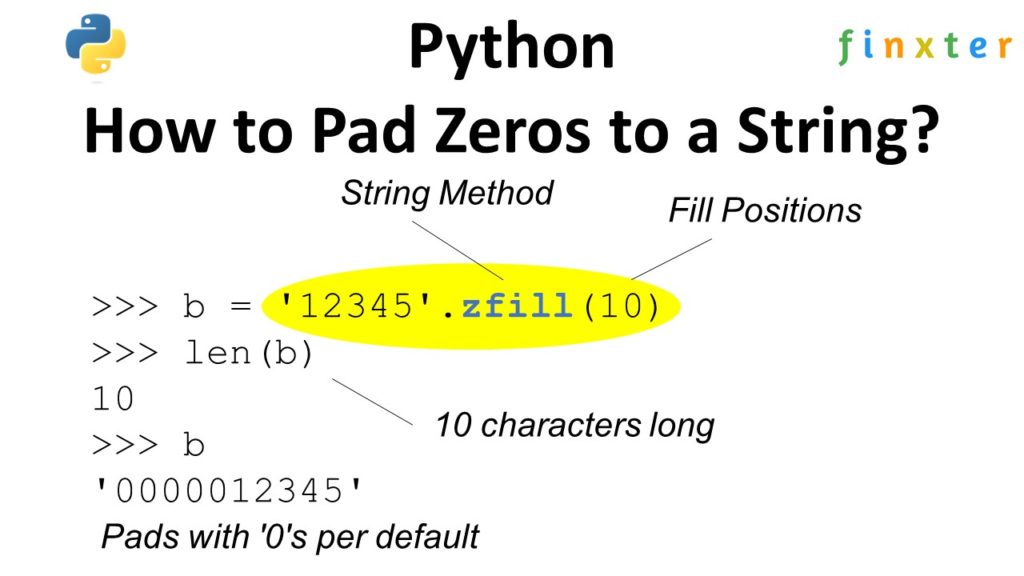To convert an integer i to a string with leading zeros so that it consists of 5 characters, use the format string f'{i:05d}'. The d flag in this expression defines that the result is a decimal value. The str(i).zfill(5) accomplishes the same string conversion of an integer with leading zeros.
Challenge: Given an integer number. How to convert it to a string by adding leading zeros so that the string has a fixed number of positions.
Example: For integer 42, you want to fill it up with leading zeros to the following string with 5 characters: '00042'.
In all methods, we assume that the integer has less than 5 characters.
Method 1: Format String
The first method uses the format string feature in Python 3+. They’re also called replacement fields.
# Integer value to be converted
i = 42 # Method 1: Format String
s1 = f'{i:05d}'
print(s1)
# 00042
The code f'{i:05d}' places the integer i into the newly created string. However, it tells the format language to fill the string to 5 characters with leading '0's using the decimal system. This is the most Pythonic way to accomplish this challenge.
Method 2: zfill()
Another readable and Pythonic way to fill the string with leading 0s is the string.zfill() method.
# Method 2: zfill()
s2 = str(i).zfill(5)
print(s2)
# 00042
The method takes one argument and that is the number of positions of the resulting string. Per default, it fills with 0s.

You can check out the following video tutorial from Finxter Adam:
Method 3: List Comprehension
Many Python coders don’t quite get the f-strings and the zfill() method shown in methods 2 and 3. If you don’t have time learning them, you can also use a more standard way based on string concatenation and list comprehension.
# Method 3: List Comprehension
s3 = str(i)
n = len(s3)
s3 = '0' * (5-len(s3)) + s3
print(s3)
You first convert the integer to a basic string. Then, you create the prefix of 0s you need to fill it up to n=5 characters and concatenate it to the integer’s string representation. The asterisk operator creates a string of 5-len(s3) zeros here.
Where to Go From Here?
Enough theory, let’s get some practice!
To become successful in coding, you need to get out there and solve real problems for real people. That’s how you can become a six-figure earner easily. And that’s how you polish the skills you really need in practice. After all, what’s the use of learning theory that nobody ever needs?
Practice projects is how you sharpen your saw in coding!
Do you want to become a code master by focusing on practical code projects that actually earn you money and solve problems for people?
Then become a Python freelance developer! It’s the best way of approaching the task of improving your Python skills—even if you are a complete beginner.
Join my free webinar “How to Build Your High-Income Skill Python” and watch how I grew my coding business online and how you can, too—from the comfort of your own home.
The post Python Int to String with Leading Zeros first appeared on Finxter.
https://www.sickgaming.net/blog/2020/11/...ing-zeros/


